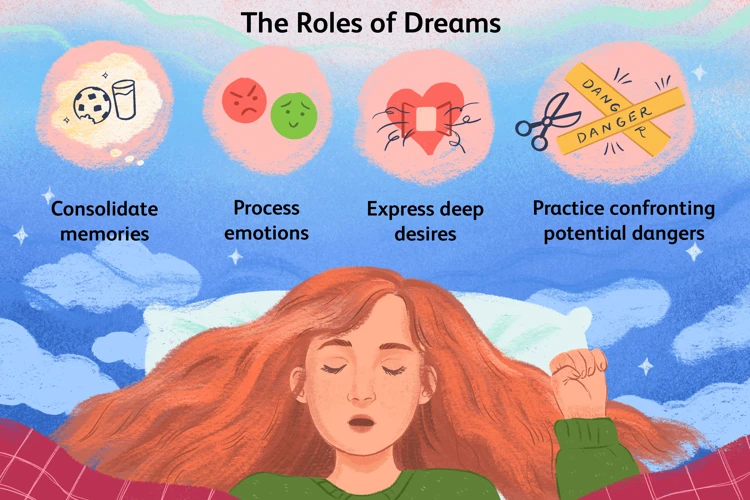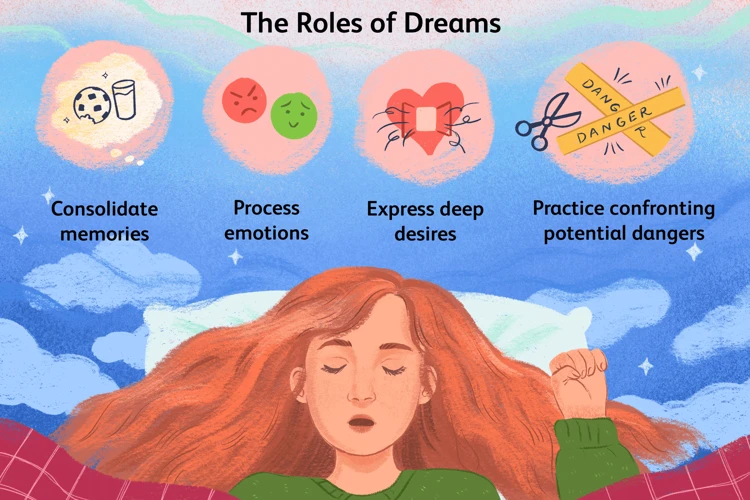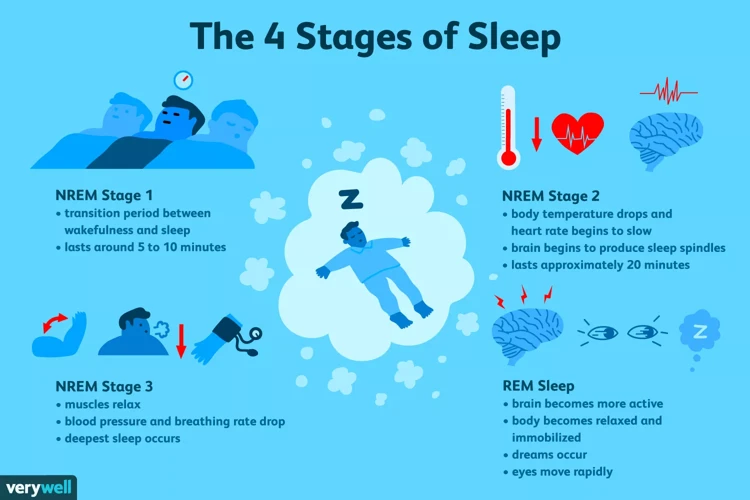Have you ever wondered about the mysteries that lie within our dreams? The ethereal nature of these subconscious journeys can leave us feeling perplexed and in awe. One intriguing aspect of dreaming is the concept of a dream within a dream. What is the meaning behind experiencing multiple layers of dreams? How can we interpret the hidden messages and symbolism within them? In this comprehensive article, we will delve into the depths of dream within a dream experiences, explore the psychological perspectives on dreaming, and discover the potential insights and benefits they offer. So buckle up and get ready for an exhilarating ride through the enigmatic realm of dreams.
The Concept of Dreams

Dreams have fascinated humans for centuries, with their ability to transport us to otherworldly realms and ignite our imaginations. Understanding the concept of dreams involves exploring their definitions and different types. Dreams can be defined as a series of thoughts, images, and sensations that occur during sleep, often accompanied by a sense of reality. They can range from ordinary, everyday experiences to fantastical adventures or deeply symbolic journeys. Dreams can be categorized into several types, such as ordinary dreams, lucid dreams, nightmares, and recurring dreams. Whether we are exploring the depths of our subconscious or unraveling the mysteries of the universe, dreams offer an intriguing glimpse into the wonders of the human mind and its capacity to create extraordinary experiences.
Definition of Dreams
The definition of dreams refers to a series of thoughts, images, and sensations that occur during sleep. Dreams can encompass a wide range of experiences, from mundane and everyday occurrences to extraordinary and fantastical adventures. They often carry a sense of reality, blurring the line between the waking world and the subconscious realm. Dreams provide a glimpse into the workings of the mind and its capacity to create unique and sometimes perplexing experiences.
Types of Dreams
There are various types of dreams, each with its own unique characteristics and meanings. Understanding these different types can provide insight into the diverse experiences we have while dreaming. Here are some examples:
- Ordinary Dreams: These are the most common type of dreams that occur during sleep. They often reflect our daily experiences, thoughts, and emotions.
- Lucid Dreams: In lucid dreams, the dreamer becomes aware that they are dreaming while still in the dream. This awareness can allow for conscious control and exploration within the dream.
- Nightmares: Nightmares are intensely disturbing dreams that can cause fear, anxiety, and distress. They often involve scenarios that evoke feelings of danger, helplessness, or terror.
- Recurring Dreams: Recurring dreams are dreams that repeat themselves over a period of time. They may contain similar themes, settings, or characters, and can often carry deep symbolic significance.
- Precognitive Dreams: Precognitive dreams are dreams that seem to foretell future events. While controversial, some individuals believe that these dreams can provide glimpses into the future.
- Spiritual Dreams: Spiritual dreams are dreams that have a profound spiritual or religious significance. They may involve encounters with divine entities, transcendental experiences, or messages from the spiritual realm.
Exploring the different types of dreams can help us appreciate the vast range of experiences that the dream realm can offer, and unravel the mysteries of our subconscious minds.
Exploring Dream Within a Dream

Entering a dream within a dream takes the concept of dreaming to an entirely new level. A dream within a dream can be defined as a dream where the dreamer experiences being within another dream, creating multiple layers of reality within the subconscious mind. It is as if the boundaries between dreams and waking life blur, leaving us with a sense of awe and wonder. The significance of experiencing a dream within a dream lies in the profound symbolism and hidden messages it may contain. This phenomenon challenges our perception of reality and invites us to explore the depths of our subconscious. As we embark on this journey of exploration, we will uncover the psychological perspectives on dreaming within a dream, unravel the common themes and triggers, and discover the therapeutic and transformative potential hidden within these enigmatic dream experiences. So fasten your seatbelts and get ready for a mind-bending expedition into the realm of dreams within dreams.
Definition of a Dream Within a Dream
A dream within a dream refers to the experience of dreaming while already being in a dream. This phenomenon occurs when the dreamer becomes aware that they are dreaming, only to find themselves in another separate dream within the original dream. It is like entering into a nested realm of dreams, where the boundaries of reality become blurred, and the dreamer may question their own perception and existence. This intricate layering of dreams adds an element of complexity and intrigue to the dreaming experience, opening doors to deeper exploration of the subconscious mind. The dream within a dream concept has been a topic of fascination in literature, films, and philosophical discussions, amplifying the enigmatic nature of dreams even further.
Significance of a Dream Within a Dream
A dream within a dream holds profound significance in the realm of dreams. It symbolizes a deeper level of introspection, where the dreamer is confronted with the idea of multiple realities or layers of existence. This phenomenon can represent the complexity of the dreamer’s thoughts, emotions, and experiences. The significance of a dream within a dream lies in its ability to challenge the dreamer’s perception of reality and blur the boundaries between the conscious and unconscious mind. It often signifies a need for self-reflection and exploration of the hidden aspects of one’s psyche. Examining the significance of a dream within a dream can lead to profound insights and personal growth, as it allows individuals to unravel the intricate layers of their subconscious and gain a deeper understanding of themselves and their experiences.
Interpreting a Dream Within a Dream

Interpreting a dream within a dream requires delving into the realm of symbolism and deciphering the layers of meaning embedded within the subconscious. When we experience a dream within a dream, it often signifies a deeper level of introspection and reflection. Symbolism and hidden messages play a crucial role in understanding the significance of these dreams. Every element, from objects and people to actions and emotions, can hold profound symbolic significance. Unraveling these symbols can provide valuable insights into our subconscious desires, fears, and unresolved conflicts. By paying attention to the emotions evoked during a dream within a dream and analyzing the contextual connections between the different dream layers, we can begin to unravel the complex tapestry of our innermost thoughts and experiences. Interpreting these dreams can be both fascinating and perplexing, as they offer us a unique portal into the depths of our own psyche.
Symbolism and Hidden Messages
Dreams are often filled with symbolism and hidden messages that may hold deep significance. Symbolism in dreams is the use of objects, actions, or events that represent abstract ideas or emotions. These symbols can vary greatly from person to person, as they are often influenced by personal experiences and cultural influences. Dream analysis and interpretation involve uncovering the hidden meanings behind these symbols, helping to shed light on our subconscious desires, fears, and unresolved conflicts. Common symbols include water representing emotions, stairs symbolizing progress or obstacles, and flying symbolizing freedom or a desire for escape. By paying attention to the symbolism and hidden messages within our dreams, we can gain valuable insights into our inner selves and navigate our waking lives with a deeper understanding.
Understanding the Layers of Meaning
Understanding the layers of meaning in a dream within a dream is an intriguing exercise that requires delving deeper into the symbols and hidden messages present in each layer. Each dream within a dream can have its own unique significance and interpretation, and understanding these layers can provide valuable insights into our subconscious thoughts and emotions. By paying attention to the details, themes, and emotions experienced within each dream layer, we can unravel the complex web of meanings intertwined within. The exploration of these layers can offer a deeper understanding of ourselves and the issues that may be occupying our minds. It is through careful analysis and reflection that we can begin to unravel the fascinating depths of a dream within a dream.
Psychological Perspectives on Dreaming Within a Dream

Dreaming within a dream is a phenomena that has captivated psychologists and researchers, challenging our understanding of the human mind and its relationship with reality. From a psychological perspective, the experience of a dream within a dream can be seen through various theories and interpretations. Some theories propose that dreaming within a dream reflects the layers of our consciousness and subconscious thoughts, while others suggest that it may signify a fragmented sense of self or a distortion of reality perception. Psychologists also delve into the role of the subconscious mind in dreaming within a dream, exploring how it serves as a gateway to our hidden desires, unresolved conflicts, and unexpressed emotions. Through these psychological perspectives, we gain insight into the complex intricacies of the human psyche and the profound impact that dreams can have on our mental and emotional well-being.
Theories on Dream Within a Dream
Theories on dream within a dream attempt to unravel the complexities of this fascinating phenomenon. One theory suggests that experiencing a dream within a dream may reflect the layers of consciousness and the subconscious mind’s ability to create parallel realities. Another theory proposes that dream within a dream scenarios may symbolize the blurred boundaries between the dream world and waking life, questioning the nature of reality itself. Additionally, some psychologists argue that dream within a dream experiences may be a manifestation of the mind’s desire to escape or cope with challenging or distressing situations. While these theories offer insight into the possible meanings behind a dream within a dream, the true nature and purpose of this phenomenon continue to elude us, adding to the mystique of the dreaming experience.
Understanding the Subconscious Mind
Understanding the subconscious mind is crucial in exploring the phenomenon of dreaming within a dream. The subconscious mind is a vast reservoir of thoughts, memories, desires, and emotions that are not readily accessible to our conscious awareness. It operates below the surface, influencing our thoughts, behaviors, and dreams. Dreams within a dream offer a glimpse into the workings of this hidden realm, as they often involve layers of symbolism and hidden messages that can provide insights into our deepest desires, fears, and unresolved conflicts. By delving into the subconscious mind, we can unravel the complexities of our dreams and gain a deeper understanding of ourselves.
Common Themes in Dream Within a Dream Scenarios

Dream within a dream scenarios often contain common themes that can provide insights into our thoughts, emotions, and subconscious desires. One common theme is the feeling of being trapped or confused, where individuals find themselves unable to escape a never-ending cycle of dreams within dreams. This can symbolize a sense of being overwhelmed by life’s challenges or feeling stuck in a repetitive pattern. Another common theme is the loss of control and distorted reality perception, where the boundaries between dreams and waking life become blurred. This can reflect feelings of uncertainty or a struggle to differentiate between what is real and what is imagined. Additionally, some dream within a dream scenarios involve the act of escaping from unpleasant situations or confronting repressed fears and conflicts. These dreams might serve as a metaphor for the need to confront and overcome challenges in our waking lives. By recognizing and exploring these common themes, we can gain a deeper understanding of ourselves and the messages our dreams are trying to convey.
Feeling Trapped or Confused
Feeling trapped or confused is a common theme in dream within a dream scenarios. Within these dreams, individuals often find themselves in situations where escape or resolution seems impossible, leading to a heightened sense of anxiety and confusion. The feeling of being trapped can symbolize a sense of helplessness or being overwhelmed by a challenging situation in waking life. It may reflect a struggle with decision-making or a feeling of being stuck in a particular aspect of one’s life. Similarly, the confusion experienced within these dreams can mirror feelings of uncertainty or a lack of clarity about a specific issue or direction. Exploring the symbolism and hidden messages within these dreams can provide valuable insights into the underlying emotions and conflicts we may be grappling with in our waking lives.
Loss of Control and Reality Perception
Loss of control and reality perception is a common theme in dream within a dream scenarios. In these dreams, individuals often find themselves unable to distinguish between the dream and waking reality, leading to a sense of confusion and disorientation. This loss of control can manifest in different ways, such as the inability to wake up from the dream, the feeling of being trapped within nested dreams, or the distortion of one’s perception of time and space. It is during these moments that the line between what is real and what is imagined becomes blurred, amplifying the surreal and surrealistic qualities of the dream. The experience of losing control in a dream within a dream can evoke feelings of unease, fear, and a questioning of one’s own existence. It serves as a reminder of how fragile our sense of reality can be and invites us to explore the depths of our subconscious mind.
Escaping from Unpleasant Situations
– Dreams within a dream can often serve as a means of escape from unpleasant situations. In these dreams, individuals find themselves trapped in a challenging or distressing scenario and then suddenly wake up, only to realize that they are still within the confines of another dream. This double-layered experience can provide a temporary reprieve from the emotional turmoil or stress that one may be experiencing in their waking life. By offering an alternate reality where individuals can momentarily distance themselves from their troubles, dreams within a dream can serve as a coping mechanism for dealing with difficult circumstances. These dreams may allow individuals to process their emotions, find creative solutions, or simply find solace in temporary freedom from the challenges they face.
Exploring Lucid Dream Within a Dream

Lucid dreaming within a dream is a fascinating phenomenon that takes the concept of dreaming to another level of consciousness and awareness. A lucid dream is a dream in which the dreamer becomes aware that they are dreaming while the dream is still occurring. It is like having a double layer of consciousness, where the dreamer is not only experiencing the dream but also conscious of the fact that it is a dream. This unique state of awareness offers the dreamer the ability to control and manipulate the dream environment, characters, and events. It is as if the dreamer becomes a director, scriptwriter, and protagonist of their own dream world. Lucid dreaming within a dream blurs the boundaries between reality and imagination, inviting us to question the nature of our waking life and the power of our subconscious mind.
Definition and Characteristics of Lucid Dreams
– Lucid dreaming is a fascinating phenomenon where individuals become aware that they are dreaming while still in the midst of the dream itself.
– Lucid dreams provide a unique state of consciousness where the dreamer has a heightened sense of self-awareness and control within the dream.
– During a lucid dream, individuals have the ability to manipulate and shape their dream environment, allowing them to engage in extraordinary experiences and activities.
– Lucid dreams often exhibit vivid and lifelike qualities, with the dreamer feeling fully immersed in a world that blurs the line between imagination and reality.
– These dreams can be triggered by various factors, such as specific techniques or practices, enhanced dream recall, or spontaneously occurring during REM (rapid eye movement) sleep.
– Exploring the realm of lucid dreams opens up a realm of limitless possibilities and offers a unique opportunity for self-exploration, creativity, and personal growth.
Experiencing Control within Dreams
In the realm of dreams, one fascinating phenomenon is the experience of control within dreams. This refers to the ability to consciously manipulate and shape the dream narrative, environment, and events while being fully aware that one is dreaming. When individuals have control within their dreams, they can alter the course of events, summon objects or people, and even fly through the vast expanses of their dreamscapes. This sense of control can be exhilarating and empowering, allowing dreamers to explore their deepest desires and fantasies in a surreal playground of their own creation. It is within these lucid dream states that the boundaries of reality and imagination blur, offering a unique and transformative experience for those fortunate enough to possess this level of dream control.
Causes and Triggers of Dream Within a Dream

The phenomenon of experiencing a dream within a dream can be triggered by various factors and circumstances. Emotional stress and anxiety are known to play a significant role in causing intricate dreams within dreams. When we are emotionally overwhelmed, our subconscious mind may create complex dream scenarios as a means of processing and coping with these intense emotions. Additionally, unresolved conflicts or trauma can also manifest in dreams within dreams, as the mind attempts to find resolution or provide an outlet for healing. Individuals with a heightened imagination and creative disposition may find themselves more prone to experiencing dreams within dreams due to their ability to dive deep into the realms of their own minds. The causes and triggers of dream within a dream experiences are diverse and unique to each individual, making them all the more fascinating to explore.
Emotional Stress and Anxiety
– Emotional stress and anxiety can significantly influence the occurrence of dreams within dreams.
– Intense emotions can create a fertile breeding ground for complex dream scenarios, blurring the boundaries between reality and the dream world.
– Feelings of stress and anxiety can manifest in dreams as a sense of being trapped or overwhelmed, amplifying the layers within the dream experience.
– The subconscious mind may use these dreams as a way to process and cope with unresolved emotions, offering a cathartic release.
– Additionally, dreams within dreams can serve as a reflection of the subconscious mind’s attempt to gain control over stressful situations, allowing for a symbolic exploration of fears and concerns.
Unresolved Conflicts or Trauma
Unresolved conflicts or trauma can be a significant trigger for experiencing a dream within a dream. When we go through difficult experiences or have lingering emotional conflicts, our subconscious mind may use dreams as a way to process and explore these unresolved issues. Within the framework of a dream within a dream, our subconscious might be attempting to bring these unresolved conflicts or trauma to the surface, urging us to confront and resolve them in order to find inner peace and healing. These dreams can present themselves as a way for our minds to provide us with an opportunity to face our fears and emotions, allowing us to work through these challenging experiences in a safe and controlled environment. Ultimately, dreams within dreams can serve as powerful tools for self-exploration and healing when it comes to unresolved conflicts or trauma.
Excessive Imagination and Creativity
Excessive imagination and creativity can play a role in triggering a dream within a dream. When our minds are filled with vivid ideas and boundless creativity, it can influence the content and complexity of our dreams. People who possess a heightened sense of imagination may find themselves more likely to experience dreams within dreams, as their minds are adept at constructing intricate dreamscapes and layering multiple dream narratives. This abundance of creativity can lead to dreams that feel incredibly vivid and immersive, blurring the lines between reality and fantasy. Additionally, individuals with active imaginations may find it easier to access lucid dreaming states, where they can consciously manipulate and control the dream environment. The interplay between excessive imagination and dream within a dream scenarios offers a fascinating exploration into the depths of human creativity and its impact on the dream realm.
Tips for Enhancing Dream Recall

Enhancing dream recall can be a valuable tool in unlocking the insights and messages hidden within our dreams. To improve our ability to remember and analyze our dreams, several tips can be followed. Keeping a dream journal is a powerful technique where we record our dreams immediately upon waking, capturing as much detail as possible. This helps in creating a habit of remembering and reflecting on our dreams. Creating a dream-friendly environment by ensuring a comfortable sleep environment, avoiding electronic devices before bedtime, and establishing a consistent sleep schedule can also enhance dream recall. Additionally, practicing mindfulness and relaxation techniques, such as meditation or deep breathing exercises, can quiet the mind and improve our ability to remember dreams. By implementing these strategies, we can tap into the rich reservoir of our dream experiences and gain valuable insights into our subconscious worlds.
Keeping a Dream Journal
– Keep a journal or notebook specifically dedicated to recording your dreams.
– Place the journal and a pen or pencil next to your bed for easy access upon waking.
– Upon waking, take a few moments to recall and write down any dreams you can remember.
– Focus on capturing as many details as possible, including specific images, emotions, and any significant events or symbols.
– Use descriptive language to vividly depict your dreams, allowing you to fully immerse yourself in the experience when revisiting them.
– Don’t worry about perfect grammar or organization; the goal is to capture the essence of your dreams.
– Review your dream journal regularly to identify patterns, recurring themes, and potential dream symbols.
– Reflect on the emotions and feelings evoked by your dreams to gain deeper insights into your subconscious mind.
– Consider sharing your dreams with others, such as friends, therapists, or dream interpretation communities, to gain different perspectives on their meanings.
Creating a Dream-Friendly Environment
Creating a Dream-Friendly Environment:
– Keep your sleeping area clean, comfortable, and clutter-free to promote relaxation and peaceful sleep.
– Use calming and soothing colors in your bedroom, such as soft blues or neutrals, to create a tranquil atmosphere.
– Minimize noise and distractions by using earplugs, a white noise machine, or soundproofing techniques.
– Ensure your sleeping environment is at an optimal temperature, neither too hot nor too cold, to encourage deep and uninterrupted sleep.
– Experiment with different scents, such as lavender or chamomile, known for their calming properties, through aromatherapy or essential oils.
– Engage in relaxation techniques before bed, such as meditation or gentle stretching, to calm the mind and prepare for restful sleep.
– Avoid stimulating activities or electronics in the bedroom, as they can disrupt sleep patterns and hinder dream recall.
– Create a bedtime routine that includes winding down activities, such as reading a book or listening to peaceful music, to signal to your body and mind that it’s time for sleep.
By creating a dream-friendly environment, you can enhance your sleep quality and increase the likelihood of having vivid and memorable dreams.
Practicing Mindfulness and Relaxation Techniques
To enhance dream recall and promote more vivid and meaningful dreams, practicing mindfulness and relaxation techniques can be highly beneficial. By incorporating mindfulness into your daily routine, you can increase your awareness of the present moment, including your thoughts, feelings, and physical sensations. This heightened awareness can help you recognize dream patterns and improve your ability to remember them upon waking. Relaxation techniques such as deep breathing exercises, meditation, and progressive muscle relaxation can also contribute to a calm and peaceful state of mind before sleep, allowing for a more restful and dream-rich experience. Embracing these practices can create a harmonious environment within your mind and body, paving the way for profound dream exploration and self-discovery.
Benefits and Insights from Dreaming Within a Dream

Dreaming within a dream can provide us with a multitude of benefits and insights that can positively impact our lives. One of the key benefits of experiencing a dream within a dream is the opportunity for self-reflection and personal growth. These layered dreams allow us to delve deeper into our subconscious, uncovering hidden emotions, desires, and fears. By examining the symbolism and messages embedded within these dreams, we can gain a deeper understanding of ourselves and our innermost thoughts. Additionally, dream within a dream scenarios can aid in problem-solving and decision-making, as they allow us to explore different perspectives and potential outcomes. The emotional healing and resolution that can occur within these dreams can be transformative, providing us with a sense of closure or clarity. So next time you find yourself embarking on a journey within a dream, embrace the experience and be open to the valuable insights and growth it may offer.
Self-Reflection and Personal Growth
Self-reflection and personal growth are key benefits that can be derived from experiencing a dream within a dream. These multi-layered dreams provide us with an opportunity to explore our innermost thoughts, emotions, and desires, inviting us to delve into the depths of our subconscious mind. By reflecting on the symbolism and hidden messages within these dreams, we can gain insights into our own fears, hopes, and aspirations. This process of self-reflection can lead to enhanced self-awareness, helping us uncover patterns, beliefs, and unresolved issues that may be holding us back in our waking lives. Through this exploration, we can embark on a journey of personal growth, gaining a deeper understanding of ourselves and paving the way for positive transformation and self-improvement.
Problem-Solving and Decision Making
Problem-solving and decision-making are key cognitive processes that play a role in our daily lives. Surprisingly, dreams can also contribute to these processes by presenting us with alternative scenarios and solutions to the challenges we face. While dreaming, our subconscious mind can analyze different aspects of a problem and generate unique perspectives that we may not have considered while awake. Dreams can offer fresh insights, creative ideas, and innovative approaches to problem-solving. They can also help us weigh the pros and cons of potential decisions, providing a safe space to explore different outcomes without real-world consequences. By paying attention to the messages and symbols within our dreams, we can tap into the problem-solving and decision-making abilities of our subconscious mind and gain valuable guidance for navigating real-life challenges.
Emotional Healing and Resolution
– Emotional Healing and Resolution –
Dreams within a dream can also play a significant role in emotional healing and resolution. They have the ability to bring forth suppressed emotions, unresolved conflicts, and past traumas, allowing us to confront and process these experiences on a subconscious level. During a dream within a dream, we may encounter scenarios that mirror our real-life struggles, providing an opportunity for emotional release and catharsis. By exploring and acknowledging these emotions in the safe space of our dreams, we can gain insights, find closure, and ultimately work towards healing and resolution. Dreams within a dream can serve as a channel for self-reflection and growth, paving the way for emotional well-being in our waking lives.
Real-Life Examples of Dream Within a Dream
– The movie “Inception” directed by Christopher Nolan is a popular example of a dream within a dream scenario. In this film, the characters delve into multiple layers of dreams, each with its own unique reality and challenges.
– In the novel “Alice’s Adventures in Wonderland” by Lewis Carroll, Alice finds herself in a surreal world where she encounters various dream within a dream sequences. These instances blur the lines between reality and the dream world, leaving both Alice and readers questioning what is real.
– Some individuals have reported experiencing dreams within dreams during sleep paralysis episodes. These vivid and unsettling dreams can create a disorienting sensation, as the person may feel trapped within a series of dreams with no escape.
– Artists and musicians often draw inspiration from dream within a dream experiences. They may create visual artworks, write songs, or even produce films that capture the intricate layers of dreams, exploring themes of perception, reality, and the subconscious mind.
– Personal accounts of people who have experienced dream within a dream scenarios often highlight the intense emotions and confusion that accompany these dreams. The complexity of these dreams can leave individuals questioning their own sense of reality and grappling with the profound symbolism embedded within them.
Real-life examples of dream within a dream demonstrate the widespread fascination with these intriguing experiences, as well as their impact on various art forms and personal accounts of individuals.
Conclusion
In conclusion, the concept of a dream within a dream presents us with a fascinating exploration of the depths of our subconscious and the multi-layered nature of our dreams. Through interpreting the hidden messages, symbolism, and psychological perspectives of dreaming within a dream, we gain insights into our innermost thoughts, emotions, and desires. Additionally, the phenomenon of experiencing a dream within a dream offers opportunities for personal growth, problem-solving, and emotional healing. While the causes and triggers of dreaming within a dream may vary, the benefits and insights gained from these experiences are invaluable. So embrace the enigmatic realm of dreams and unlock the secrets that lie within the ethereal landscape of your own mind. Sweet dreams!
Frequently Asked Questions
What is the significance of dreams in our lives?
Dreams play a significant role in our lives as they provide a unique window into our unconscious mind. They can offer insights into our emotions, desires, and fears, helping us gain self-awareness and navigate our waking lives more effectively.
Can dreams predict the future?
While some people believe that dreams can predict the future, there is no scientific evidence to support this claim. Dreams are more closely associated with our personal experiences, thoughts, and emotions rather than foretelling specific events.
Why do we forget our dreams so quickly?
Forgetting dreams quickly is a common occurrence due to how our brain processes and stores memories. The transition from the dream state to wakefulness can disrupt memory consolidation, making it challenging to recall dreams once we are fully awake.
Do dreams have hidden meanings?
Dreams are often rich with symbolism and can contain hidden meanings. They may reflect our subconscious thoughts, emotions, and unresolved conflicts, providing valuable insights into our inner world. However, interpreting dream symbolism is highly subjective and can vary from person to person.
Why do we sometimes experience dreams within dreams?
Dreams within dreams, also known as nested dreams, can occur when the mind creates multiple layers of dreams within the main dream. This phenomenon can be influenced by external factors, such as the surrounding environment, as well as our subconscious desires and concerns.
Can we control our dreams?
Yes, it is possible to control our dreams through a practice called lucid dreaming. Lucid dreaming is a state where one becomes aware that they are dreaming while still in the dream. This awareness allows individuals to consciously influence and direct the unfolding of their dreams.
Do recurring dreams hold any significance?
Recurring dreams can hold significance as they often represent unresolved issues, fears, or emotions that need attention. These dreams serve as messages from our subconscious, urging us to address and resolve the underlying issues they symbolize.
What are the potential benefits of analyzing our dreams?
Analyzing dreams can offer a range of benefits. By exploring the symbols and hidden messages within our dreams, we can gain a deeper understanding of ourselves, promote personal growth, gain insights into our emotions, and even find solutions to real-life problems.
What causes nightmares?
Nightmares can be caused by various factors, including fear, stress, trauma, or even certain medications. They are the mind’s way of processing and expressing intense emotions or distressing experiences, creating vivid and often terrifying dream scenarios.
Can external factors influence our dreams?
External factors such as daily experiences, environmental stimuli, and personal circumstances can influence the content and themes of our dreams. These external influences can manifest in our dreams as familiar faces, locations, or situations, intertwining with our subconscious thoughts and emotions.


